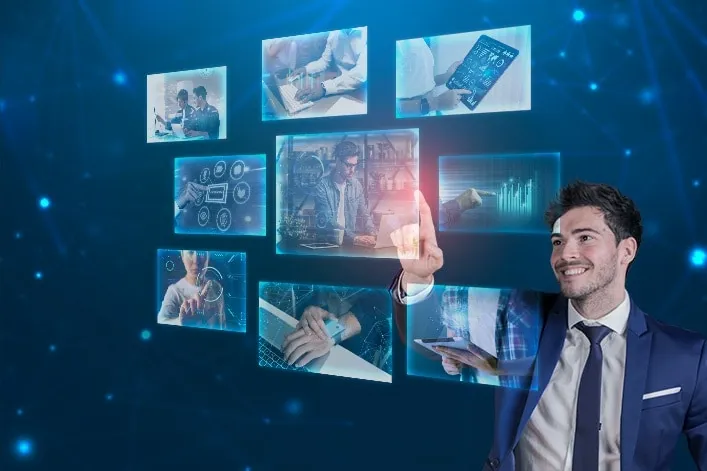- Home
- >
- Software Development
- >
- 25 Important Software Development Trends 2024
The global business software and services market has experienced significant growth in recent years. As of 2022, the market size was valued at USD 474.61 billion and is projected to expand at a compound annual growth rate (CAGR) of 11.9% from 2023 to 2030. Additionally, the market size is expected to grow from USD 580.06 billion in 2023 to USD 987.61 billion by 2028, with a CAGR of 11.23% during this forecast period.
This growth is attributed to increasing business adoption of digitalization, and other technological advancements as these tools help businesses streamline operations, and enable faster, more efficient workflows.
With such thriving in the software market, businesses must timely adopt the latest software development trends to stay ahead of their competitors. For that reason, we’ve compiled a list of the top software development trends that will drive your business’s revenue.
1. Businesses Adopt Low-Code Development
Software development often copes with problems and setbacks. About 20% of all software projects fail and another 52% are “challenged”. Not to mention, the process is also incredibly expensive.
According to a study done by Forrester, the businesses that adopted low-code platforms processed more effectively than the firms using the traditional ones. In specific, experts without coding skills can build software in the domain they know best. This enables small startups or SMEs to bring their product to the market easier than ever before.
Consequently, those factors have prompted some companies in the software development industry to start simplifying their approach to creating software.

low-code software development. Source: Google trends
Low-code development refers to a software development approach that minimizes the need for manual coding, enabling faster delivery of applications.
The software developed this way does not use advanced IT knowledge or coding skills. It relies on graphical user interfaces and configuration instead. This approach is especially beneficial for users without extensive programming knowledge, but still want to develop or customize applications.
Therefore, it allows low-code software development to translate into easier and faster development.
Read more: TOP 3 Low-Code Tools for Application Development
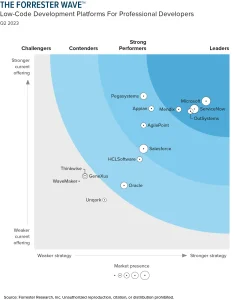
As you can see from the graphics, they are the top popular low-code platforms that are worth considering.
2. Work Remotely Drives An Increase In Cloud Computing
The software development industry trends are leaning heavily toward remote work solutions. During the pandemic, most businesses expanded remote work capabilities and experienced a huge shift in IT needs. Once the pandemic passed by, a new working mode called hybrid working is emerging. Some still want to work remotely due to being more flexible while others choose to work at the office.
This current work landscape calls for solutions like cloud services since they can help employees work efficiently even when they’re at home.
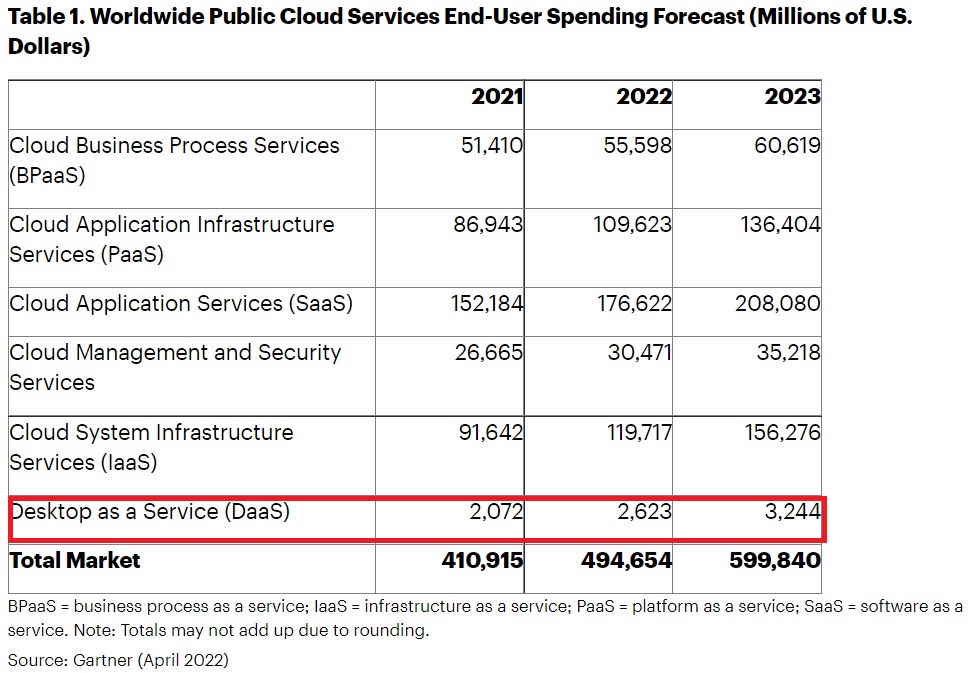
Cloud service as a software development trend
By the end of 2022, the global cloud computing market will reach $623.3 billion. By 2025, that number will push through the $800 billion mark.
Within 1 year, from 2021 to 2022, the spending on public cloud services from end-users added up by 17%. This number is forecasted to grow even faster in the year 2023.
Hybrid work has urged businesses to replace their traditional client computing solutions (desktops, in-office tools, etc) with DaaS, which is driving spending to reach $2.6 in 2022. Due to the massive growth in this industry, demand for cloud-native software engineers has never been higher.

cloud engineering software development trends over the last 5 years
3. Malicious Software Development Ramps Up
As we move forward, cybersecurity remains an increasingly critical concern. Companies are actively seeking advanced tools and strategies to safeguard their digital assets.
Recent software development trends have shown a sharp increase in ransomware attacks. A 2023 report by Malwarebytes revealed 1,900 ransomware attacks across just four countries (the US, Germany, France, and the UK) in a single year, with the US bearing 43% of these attacks. The frequency of attacks in the US increased by 75% in the latter half of 12 months, while France experienced a particularly high rate of attacks on its government sector.
Malware methods are also becoming more sophisticated and damaging. For example, the tactic of double extortion in ransomware has become more prevalent. In these attacks, cybercriminals not only encrypt the victim’s data but also threaten to leak sensitive information if the ransom isn’t paid. This dual threat significantly escalates the potential damage of the attacks.
In 2023, MOVEit Transfer, known for its secure managed file transfer services, fell victim to an attack by the Clop ransomware group. This incident led to the theft of sensitive customer data, affecting a vast number of organizations and nearly 18 million individuals, as reported by Kolide.

Ransomware – one of software develoment trends you should watch out
The financial implications of ransomware are rising. In 2023, the average ransomware payout escalated to $1,542,333, marking a significant rise from the previous year’s average of $812,380. The average cost of ransomware recovery is now nearly $2 million, underscoring the heavy financial burden these attacks impose on organizations.
IBM Security’s latest report highlights the substantial financial savings that can be achieved through robust security automation. Businesses that implement comprehensive security measures and automation can significantly reduce the financial impact of a data breach.
4. Cybersecurity at the Forefront
To combat cybersecurity attacks, many organizations invest in cyber insurance. By having cyber insurance, companies can recover more effectively from the financial damages of cyber attacks.
However, if your company is on a low budget for cybersecurity, it’s best practice to comply with standard protocols beforehand.
One way to do this is by educating employees on cybersecurity best practices. This involves training them on securing home networks, recognizing phishing attempts, and safely using work devices, as these are common entry points for cyber threats.
Moreover, as cloud computing becomes ubiquitous, tech companies are increasingly merging cloud security with their overall cybersecurity strategies. This approach is essential in protecting data and applications hosted in cloud environments from cyber-attacks.
5. Rise of AI and Machine Learning (ML)
Exploring the latest trends in software development reveals a growing emphasis on AI and ML integration. According to the International Data Corporation (IDC), the global AI market has experienced significant growth. In 2022, the market was valued at $64 billion, and it is projected to reach nearly $251 billion by 2027.
The reason different industries increasingly adopt AI is that this technology helps lower costs by increasing efficiency and reducing errors.
A survey by the American Hospital Association (AHA) found that 42% of respondent health systems have implemented an AI strategy. Furthermore, Optum’s third annual AI in Health Care Survey revealed that 86% of top healthcare providers are already utilizing AI technology in their clinical and operational workflows.

AI and healthcare on Google Trends
In the business world, AI software is making an impact through Robotic Process Automation (RPA).

search for growth of robotic process automation on google trends
As of 2023, the application of Robotic Process Automation (RPA) in businesses has evolved. According to Deloitte’s Global RPA Survey, 53% of respondents have already embarked on their RPA journey, and an additional 19% plan to adopt RPA within the next two years. This indicates a growing recognition of the efficiency and productivity gains RPA can offer.
6. Data-driven Development
The software development trends will see more data-driven decisions rather than intuition as businesses are adopting AI/ML tools and updating their technologies to keep up.
Data-driven development emphasizes the use of real data to guide the design, implementation, and refinement of software products. It’s especially prevalent in web and application development, where user interaction data can be readily collected and analyzed.

Data-driven decision making
Netflix is a prime example of data-driven development in action. The streaming service collects vast amounts of data on viewer habits, preferences, and behaviors. This data includes what, when, and how users watch content, as well as user interactions with the Netflix interface. And then they use this data to develop and refine its platform and content.
This showcases that by taking data-driven actions, business owners can stay abreast of the latest technology in software development, thereby driving innovation and efficiency in their industry.
7. Rust gains popularity
In the next 5 years, Rust’s growing popularity is one of the software development trends.
Rust is a system programming language that you can use to write high-performing applications. It’s well-known for its performance and safety, especially safe currency and memory management. Some big-name players such as Facebook, Dropbox, and Amazon also use Rust in production.
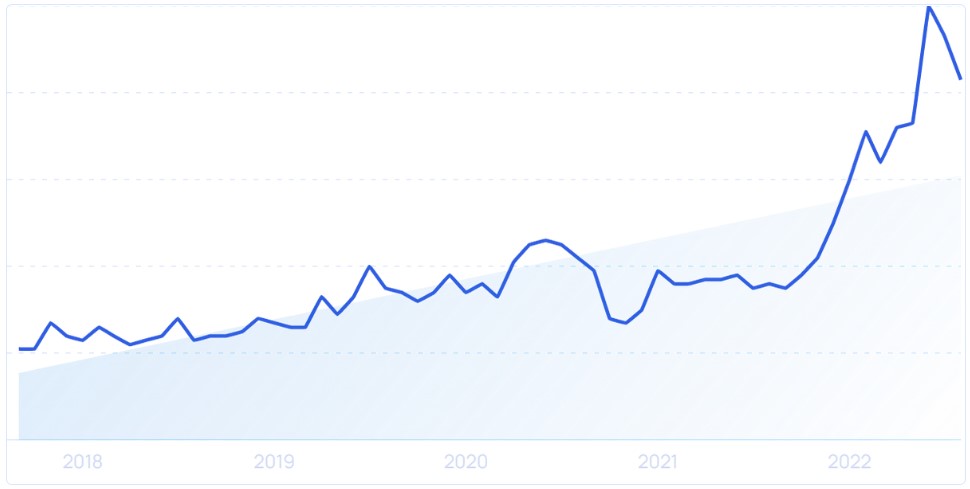
Searches for “Rust” have soared in the last 5 years with a 144% increase
Github reports the Rust developer community has grown to approximately 2.8 million worldwide, nearly tripling in size over the past two years.
8. Continued Expansion Of The IoT
In discussing the latest trends in software development, it’s impossible to ignore the impact of the Internet of Things. It’s true to say IoT is set to continue on the list of software development trends in 2023 and beyond.
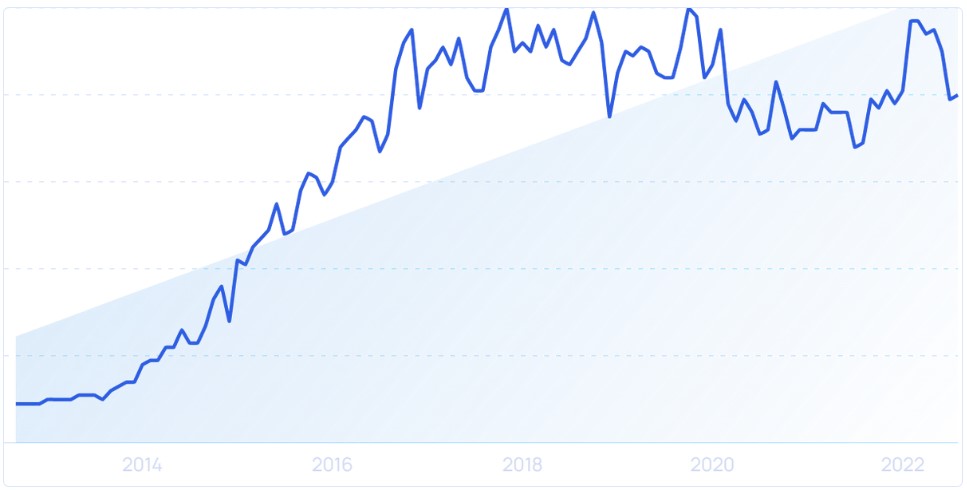
Search growth for the “Internet of things” appears to be on the rise once more.
Statistics show that there will be 65 billion IoT devices in 2025. That’s 6x more than in 2018.
Smart speakers, in particular, are expected to continue to grow in popularity. According to data, the market could be worth $35.5 billion in 2025. According to Forrester, wearables and sensors that allow patients to monitor their health at home will skyrocket in 2021 and beyond.
Data collected from patients can help doctors be more proactive in medical treatments and improve care.
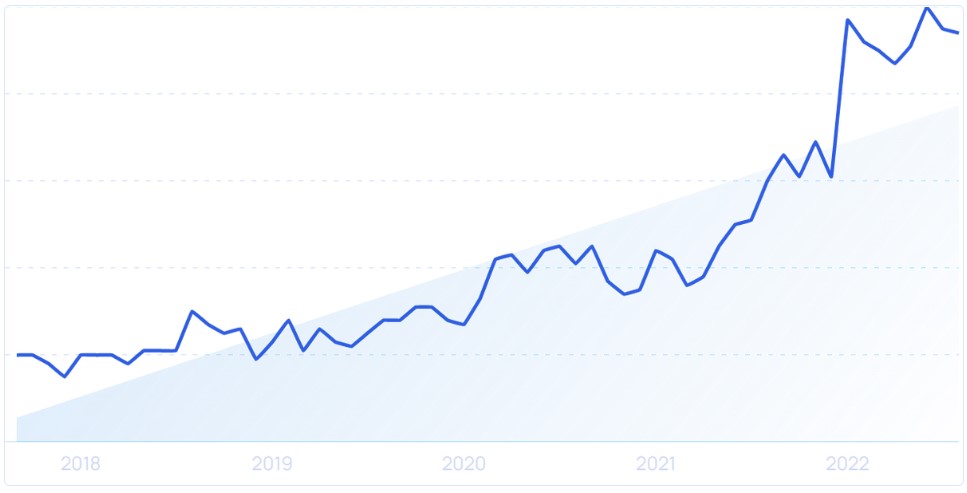
Searches for “remote healthcare” have grown 357% over the past 5 years and have remained high since then
The IoT extends far beyond its use in homes.
Bayer recently developed a low-cost IoT chip that is similar to a mailing label. This chip can be attached to any product from chemical compounds to seed packs and used for tracking purposes in the distribution process. Not stopping in the industrial field, the applications of IoT are also in the workplace.
9. Progressive Web Apps (PWAs) To Provide A Better User Experience
2024 is a pivotal year for trends in application development, with a focus on progressive web apps.
Normally, smartphone users don’t often download apps as they take up too much of their phone’s storage. Google pointed out that up to 50% of smartphone users choose a brand’s mobile site as an alternative to an app. Therefore, many companies are turning to progressive web apps (PWAs) as a solution.
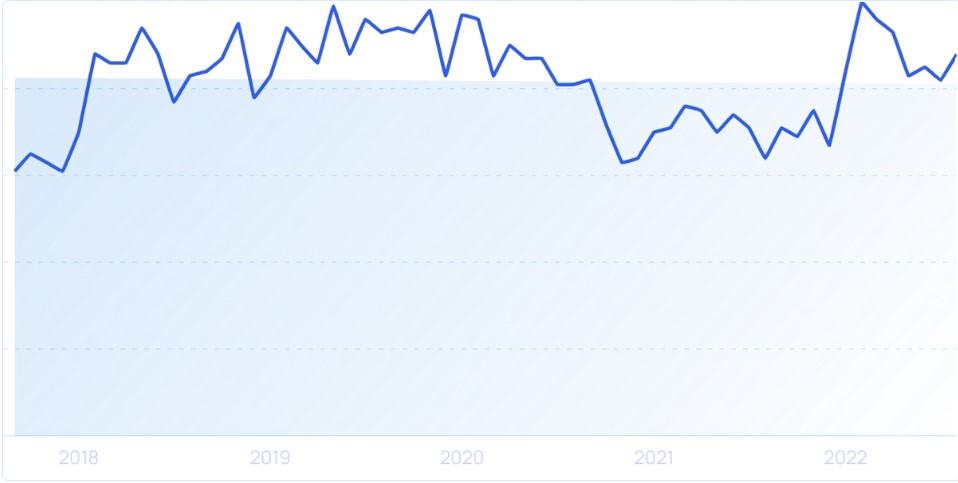
A big jump in the search volume for “progressive web apps” in early 2022
A Progressive Web App (PWA) is a type of application delivered through the web, built using common web technologies including HTML, CSS, and JavaScript. PWAs are designed to function like native apps on mobile devices, offering features such as offline access, push notifications, and device hardware access, while still being accessible through a web browser
The PWA is much lighter than the traditional app. For example, compared to the native app, the PWA from Twitter only accounts for 3% of the storage of the Android app. What makes them different is PWA takes away the browser interface and borders. PWA users can simply save the app to the home screen for use and do not need to download the whole app.
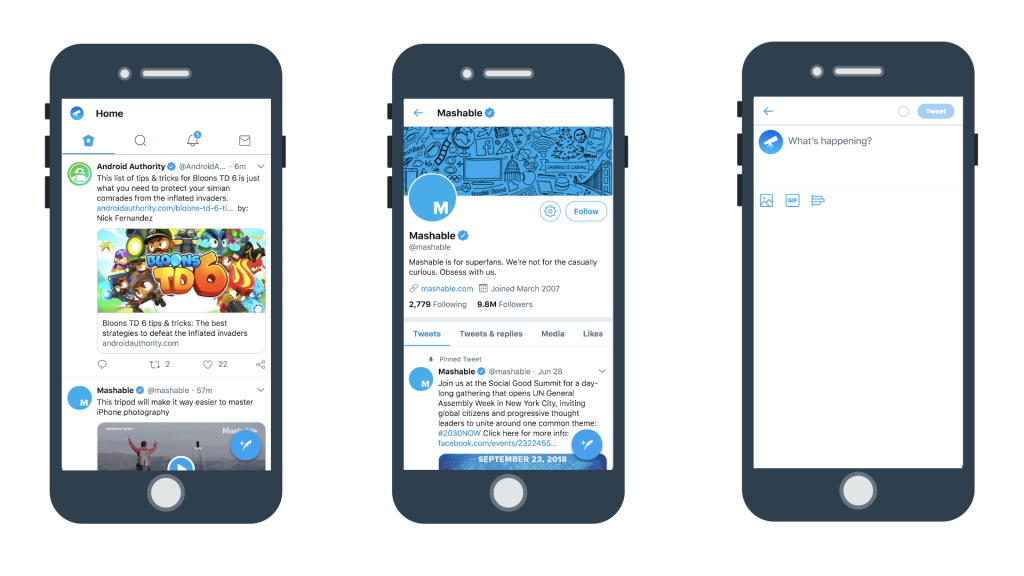
An example of PWA on Twitter
PWAs load quickly and send push notifications in the same way that native apps do. They’re also available offline because they cache data.
PWAs are becoming increasingly popular among developers because they are platform agnostic—developers do not need to create separate apps for mobile, tablet, and desktop.
10. Microservices Architecture Simplifies Deployment And Scaling
According to Technavio, the cloud microservices market is expanding rapidly. They predict that the CAGR will exceed 25% by 2026, adding $1.59 billion to the market value.
The microservices architecture is a novel approach to software development. It is a type of framework that allows developers to build applications that are independent of other services. These modules can be managed and changed without affecting the other components.
In comparison, the traditional approach, monolithic architecture involves coupling all application processes and running them as a single service. The code is all grouped, and changing one process means changing the whole application. This method is neither flexible nor scalable.
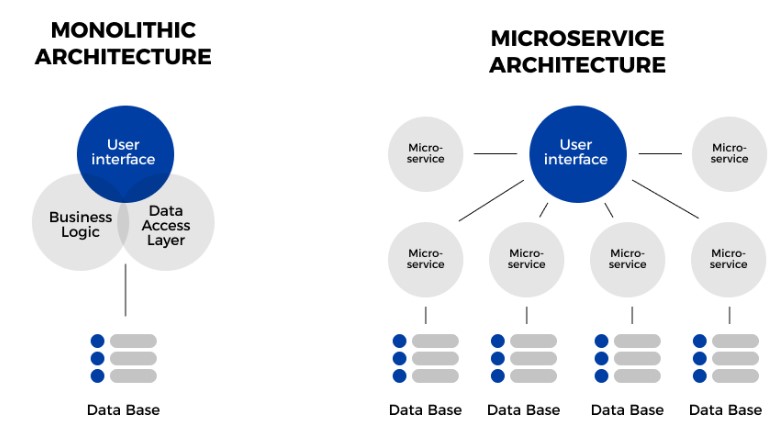
This new structure eliminates the need for developers to spend time developing and maintaining applications. It also allows them to reuse their applications in other projects.
Statista published Global perceptions of microservices users in organizations 2021 reports in 2023. It is said that about 45% of people using microservices agreed that they bring a lot of benefits to development teams. Microservices are great for attracting talented people and making team members work better together.
11. Blockchain In Software Development Expands
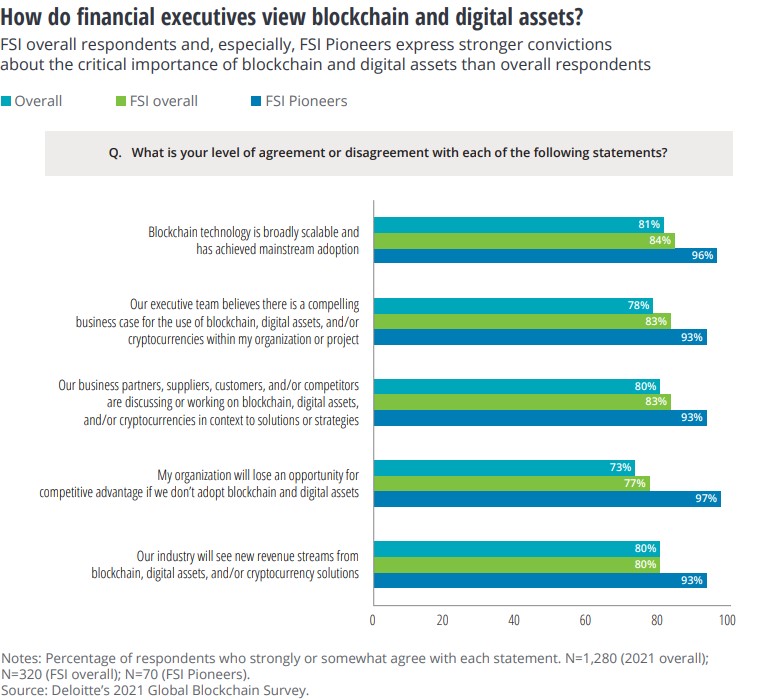
Among the most notable software development trends is the increased use of blockchain for data security. Blockchain-oriented software (BOS) systems are extremely stable and secure. Its data is replicated and stored in a decentralized manner, which ensures its security. Multiple layers of safety help prevent unauthorized access. Users can only view and record the data, and they are not able to modify or delete it.
A Spendmenot survey indicates that nearly 80% of global executives consider blockchain to be “very important” for their industries. Additionally, 81% of the top 100 public companies said they’re utilizing blockchain technology. This demonstrates a significant increase in blockchain adoption among major corporations.
Another instance of blockchain-based software is a specific type of app called a decentralized application (dApp). As referred by its name, there is no centralized place to store code or any companies to manage it. This means no middleman is required. In other words, users no longer need third-party organizations such as Airbnb or Grab. Now they can directly access the platforms and services.
12. Companies Turn To Outsourcing In The Face Of IT Skills Shortage
Despite the robust emergence of new technologies, the shortage of skilled labor in the IT industry is preventing businesses from adopting them.
According to a Gartner report for 2021, 64% of executives say the most significant adoption barrier for their business is a lack of talent, compared to only 4% in 2020. 73% of technology leaders say it’s either very or somewhat difficult to recruit tech workers and fill open positions.
By 2030, there could be 85 million unfilled jobs, costing the global economy $8.5 trillion.
According to Statista, cybersecurity and Big data/analytics are the top two areas that are lacking Tech talents.
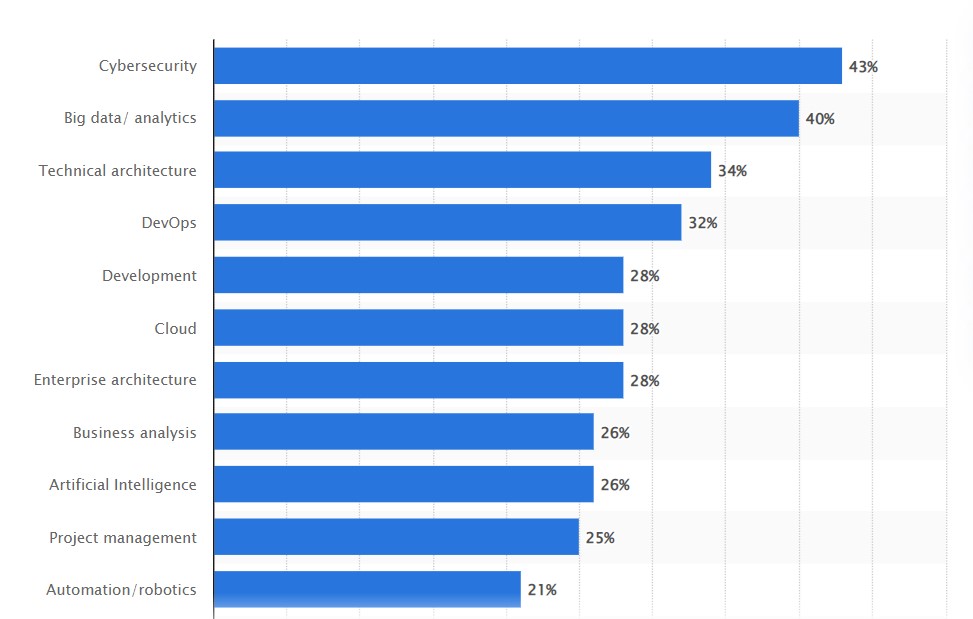
Outsourcing is a common strategy used by IT departments to scale and remain agile while avoiding the headache of recruiting and the pinch of attracting new employees with high salaries. The IT outsourcing market is expected to grow to $689 billion by 2027, from $522 billion in 2021. So software outsourcing will be here to stay as a key software development trend in 2023 and more.
But do bear in mind the rise in software outsourcing trends will mean a growing need for specialized skill sets, so developers do watch out!
Learn more: OUTSOURCING COST VS. IN-HOUSE COST: HOW TO ANALYZE AND CALCULATE RIGHT?
13. DevSecOps Approach Integrates Security Into The Development Process
The combination of security, operations, and development (DevSecOps) is a new approach that enables organizations to develop software that is secure throughout their entire lifecycle.
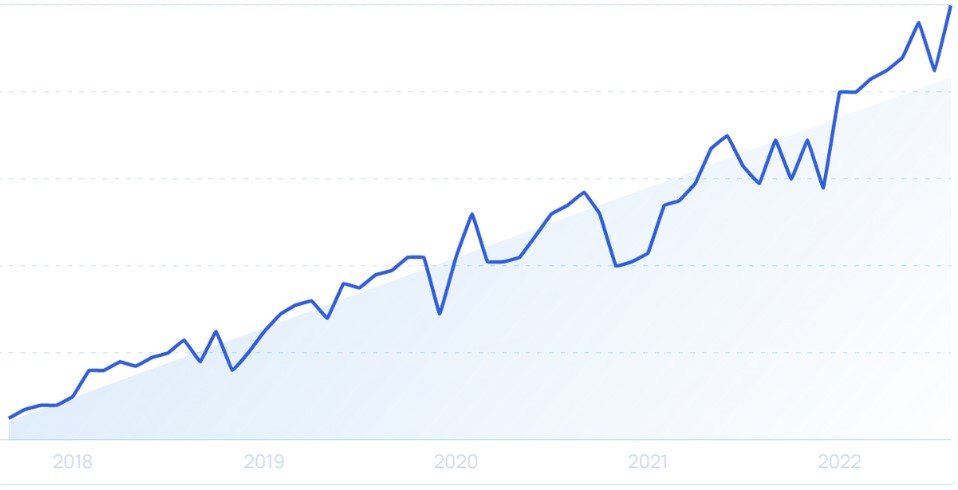
Search volume shows growing interest in “DecSecOps.”
When it comes to implementing security without slowing down development or delaying releases, DevSecOps integration is critical. Instead of worrying about security at the end of the development process, developers can fix security flaws in code in real time.
As a result, software that is as secure as possible is deployed as quickly as possible.
14. Cloud-Native Development
Cloud-native refers to building and running applications that fully leverages the benefits of cloud computing. This way, applications are designed to be lightweight, modular, and scalable, often structured as microservices. These applications are built to run in modern, dynamic environments such as public, private, or hybrid clouds, with capabilities like automated deployment, scalability, and management built into their architecture.
Cloud-native development has been used to develop a wide number of apps, from e-commerce, streaming, financing, healthcare, IoT and AI and ML Platforms. Netflix and Spotify are two giants that already leverage cloud-native technologies to deliver content globally.
McKesson, a pharmaceutical distribution and healthcare IT company, uses cloud-native strategies to optimize supply chain management and healthcare data analytics. The investment banking giant Goldman Sachs also employs cloud-native technologies for various financial services, including data analysis, risk management, and customer-focused applications. JPMorgan Chase, a leading global financial services firm uses cloud-native solutions to improve its banking services, risk management, and customer interaction platforms.
15. Edge Computing
In simpler terms, edge computing processes data near the location where it’s being generated, instead of relying on a central data center far away. This approach is beneficial for real-time data processing scenarios and is commonly used in Internet of Things (IoT) applications, such as smart cities, self-driving cars, and real-time analytics.
According to the latest forecast from Markets and Markets in their report “Edge Computing Market Global Forecast to 2028,” it is projected that the global market for edge computing will expand to USD 111.3 billion by the year 2028. This growth represents a Compound Annual Growth Rate (CAGR) of 15.7%.

Here’s a few examples of edge computing used in major tech companies
- Google: Google has been expanding its edge computing capabilities, including the launch of Google Distributed Cloud, built on the open-source platform Anthos.
- Microsoft: Offers Azure Stack Edge, a hardware-as-a-service offering for cloud-to-edge experiences, and private Multi-access Edge Computing (MEC) solutions.
- IBM: Continues to add enterprise edge computing offerings, including its Edge Application Manager
In the upcoming years, as 5G networks become more prevalent, edge computing will likely see greater integration with these networks to leverage their high speed and low latency. Also, the rise in edge computing will drive more focus on data security and privacy.
16. Quantum Computing
Quantum computing takes advantage of the peculiar properties of quantum mechanics. Unlike classical computers, which use bits (zeros and ones) to process information, quantum computers use quantum bits, or qubits.
According to GLOBE NEWSWIRE, in 2022, the worldwide market for quantum computing was valued at about $10.13 billion. It’s predicted to jump to roughly $125 billion by 2030. This growth is expected to happen at a pretty fast pace, with an estimated annual growth rate of 36.89% from 2023 to 2030.
The big update is the industry is shifting away from the notion of “noisy intermediate-scale quantum” (NISQ), which proposed that chips with a few hundred qubits could do useful computing despite noise disruptions. This shift is towards larger-scale quantum computers capable of correcting errors. Achieving large-scale quantum computers with active error correction is a long-term goal.
17. Serverless Computing
Imagine crafting your code without worrying about underlying infrastructure. It’s not just about reducing workload; it’s about opening a world of possibilities.
Serverless computing is a powerful cloud computing model that frees developers from the burden of managing servers. It’s essentially a way to run your code without having to provision or maintain any underlying infrastructure.
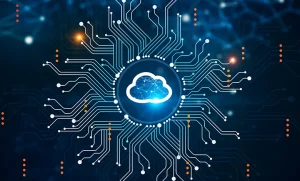
What you don’t do:
- Provision servers: No worrying about choosing the right server size, setting them up, or patching them for security.
- Manage software: No server OS updates, firewall rules, or load balancing configurations to deal with.
- Scale infrastructure: Serverless automatically scales up or down based on your application’s demand, so you don’t pay for idle resources.
What you do:
- Write code: Focus on your application logic and functions, whether it’s processing data, triggering events, or interacting with APIs.
- Deploy code: Upload your code to a serverless platform, and it takes care of the rest.
- Pay for execution: You only pay for the resources your code uses, making it a cost-effective approach for event-driven and microservices-based applications.
Serverless computing, therefore, unlocks faster development, agile scaling, pay-per-use savings, and streamlined operations. It’s the ideal recipe for modern apps thriving in today’s dynamic world.
According to MarketsandMarkets, the global serverless computing market is expected to total about $10.5 billion in 2023. It is expected to grow at a CAGR of 33.5% from 2023 to 2030. Key drivers include adoption of cloud-based applications; demand for agility and scalability in application development; cost-efficiency benefits; growing popularity of event-driven architectures; and integration with other cloud services, such as AI/ML and IoT.
18. Open-source Software (OSS) Dominance
In the upcoming years, open-source software (OSS) – one of the software development trends, will shape the tech industry. OSS refers to software whose source code is made available for anyone to view, modify, and distribute.
A significant trend in OSS is the integration of Artificial Intelligence (AI) and Machine Learning (ML). This is enhancing the efficiency and sophistication of open-source projects. This integration reflects a broader technological advancement, making OSS more powerful and versatile.
Gartner predicts that by 2026, over 80% of enterprises will have used some form of generative AI APIs and models and/or AI-enabled applications in production, up from less than 5% in previous years. Many of these applications will run on open-source environments, indicating a significant trend toward integrating advanced AI capabilities into OSS.
19. API-first Development
Instead of starting with the user interface or backend logic, API-first development prioritizes defining the application’s functionality through APIs. Think of APIs as the building blocks – everything the application does is exposed and accessible through well-defined interfaces.
According to the 2022 State of the API Report, some 51% of respondents said that more than half of their organizations’ development effort is spent on APIs—compared with 40% of respondents in 2020 and 49% in 2021. They all have a reason. It’s because APIs offer them several benefits, as follows:
- Better Design: Focusing on APIs forces a clear understanding of the system’s core functionality and data model. This leads to cleaner, more consistent, and reusable code.
- Faster Development: Defining APIs upfront facilitates parallel development for front-end, back-end, and even third-party integrations. This can significantly speed up the overall development process.
- Increased Agility: APIs act as a stable connection point, allowing components like user interfaces and integrations to be easily swapped or updated without affecting the core functionality. This makes the application more adaptable to changing needs.
- Enhanced Developer Experience: Well-designed APIs with clear documentation and tools like code generation make it easier for developers to integrate and use functionalities, saving time and effort.
- Openness and Integration: APIs act as gateways to the application’s functionality, enabling seamless integration with other systems and promoting a more open and extensible architecture.
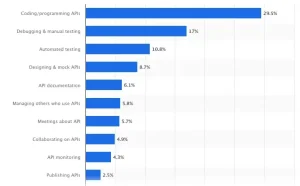
Developers report that 30% of their time is spent on coding APIs (2020). Source: Statista
20. Augmented Reality (AR) and Virtual Reality (VR)
Another remarkable aspect of the latest technology in software development is the integration of augmented reality (AR) and virtual reality (VR).
AR is commonly used in mobile applications, allowing users to see digital augmentations through their device’s camera. For instance, in retail, AR apps let customers visualize products in their own space before purchasing. Virtual Reality (VR), on the other hand, creates a completely immersive digital environment. Users wear headsets to enter and interact with a 3D world. VR is extensively used in gaming, providing an immersive experience that places the player directly into the game.

Augmented Reality (AR) and Virtual Reality (VR)
As these technologies continue to develop and integrate with other advancements like AI and IoT, their potential in software development will grow. The global VR market was valued at $7.72 billion in 2020 and is expected to reach $26.9 billion by 2027, with a CAGR of 19% from 2021 to 2027.
About 61% of consumers prefer retailers offering AR experiences, and 71% would frequent stores more if they implemented AR.
21. Continuous Integration and Continuous Delivery (CI/CD)
CI is the practice of frequently integrating code changes into a shared repository. Ideally, developers integrate their code several times a day, each time triggering automated build and test processes. CD helps extend CI by automating the delivery of applications to selected infrastructure environments. This ensures that developers can release the software at any time with minimal manual intervention.
AI and ML can automate complex decision-making processes, optimize testing, predict potential issues, and provide actionable insights. So we will see AI and ML being integrated into CI/CD in the next few years.
The shift-left approach in testing and quality assurance, integral to CI/CD practices, is growing in importance. This trend involves moving testing earlier in the software development lifecycle. Therefore, it allows teams to detect and address issues sooner, thus reducing the cost and time involved in fixing bugs later.
22. Developer Experience (DX) Focus
The increasing focus on Developer Experience (DX) is a prominent trend in the software industry. A positive DX streamlines development workflows, making it easier for developers to perform their tasks. This includes intuitive tooling, clear documentation, and efficient processes, which collectively reduce the time and effort required for development tasks.
Known for its innovative tools and technologies, Google has a strong focus on DX. This is evident in their development of platforms like Firebase and Google Cloud Platform, which provide developers with integrated tools and services designed to simplify and enhance the development process.
23. 5G Technology
5G technology offers unprecedented data transmission speeds, significantly faster than its predecessor, 4G. This speed boost is crucial for software that relies on real-time data processing, such as live streaming applications, augmented reality (AR), virtual reality (VR), and online gaming.
The reduced latency, or delay in data transmission, enables smoother, more responsive user experiences. All this is essential for applications requiring real-time interactions.
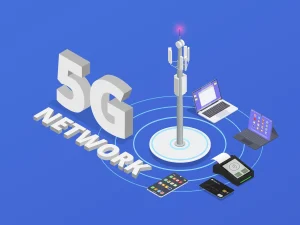
5G technology – the next software development industry trends
The upcoming years will witness a growing role of AI and ML in 5G technology. 5G networks are incredibly complex, and AI/ML is crucial for managing this complexity effectively. AI-driven automation allows for more efficient network management and optimization, addressing issues like traffic routing, load balancing, and predictive maintenance.
24. Full-Stack Development
Advancements in the latest trends in software development have paved the way for full-stack development. This is the development of both the front-end (client side) and back-end (server side) of a web app, reducing the need for multiple specialized teams. Companies seek individuals who can handle diverse aspects of development, making full-stack skills highly sought after.
According to the U.S. Bureau of Labor and Statistics, developers will grow by 27 percent by 2024. For companies, hiring full-stack developers can be more cost-effective as they can handle multiple facets of development, reducing the need for larger, more specialized teams.
25. New Programming Languages
Finally, software development industry trends in 2024 and beyond will see the solidification of some languages and increased adoption of others.
Aside from Rust which is gaining traction in system-level programming, here are a few updates on what programming languages are gonna be on top trending chart,
- Emerging technologies like quantum computing are introducing new programming languages like Q#, specifically designed for quantum algorithms.
- In web development, WebAssembly is enabling faster, more complex web applications by allowing code written in languages like C++ and Rust to run in the browser.
- The growth of AI and ML is also solidifying Python as a leader due to its extensive libraries and frameworks.
- Additionally, the Internet of Things (IoT) is pushing the boundaries of embedded system programming, increasing the relevance of languages like C, C++, and Rust
Wrap up
We’ve wrapped up the top 11 key software development trends to look out for in 2024. Throughout the article, you can spot the opportunities that technologies can bring to your businesses. Your job now is to find out which one can be your hidden blackjack to make your business shine in the competition.
About InApps
At InApps Technology, our team of highly skilled developers focuses on crafting projects tailored to your business needs. Our clients love that they can benefit from our outsourcing software development services and offshore development center at the same time. From Mobile App and Web Development, UI/UX Design, and the Offshore Development Center. Technology can be daunting, but due to our versatility, we can make things work for you.
Need to hire professional software development engineers? Reach out to our team and meet the suitable candidates for your requirements.
Let’s create the next big thing together!
Coming together is a beginning. Keeping together is progress. Working together is success.




